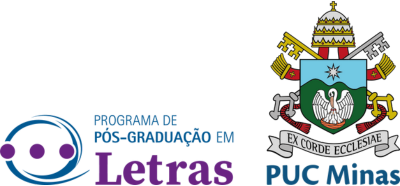Representation of the Portuguese varieties in the guiding documents for the teaching/learning of Portuguese as a foreign language
DOI:
https://doi.org/10.5752/P.2358-3428.2021v25n53p363-394Keywords:
Português Língua estrangeira (PLE), Material didático, Variação Linguística, Políticas linguísticasAbstract
The present study aims to analyze the representation of the varieties of Portuguese in the guiding documents for teaching / learning Portuguese as a Foreign Language (henceforth PLE). In the context of teaching PLE outside countries that have Portuguese as their official language, we find a large number of teachers who do not have specific language training. The promising job market in some countries absorbs speakers of other languages who have taken short courses or even professionals from other areas who have Portuguese as their mother tongue. Such professionals are not always familiar with notions such as standard language, cultured norm, linguistic variation. In these contexts, the guiding documents can offer subsidies for the planning of courses, assessments and even as the only source of theoretical reference for teachers with little or insufficient theoretical training. It is worth asking the following question: how do such guiding documents contribute to giving visibility to the varieties of Portuguese? This is the central question that we set out to answer. To this end, we analyzed some documents aimed at the systematization of content for the teaching / learning of PLE. The results show that, in most cases, such documents still offer little information that could promote the representation of the Portuguese varieties in the PLE classroom.
Downloads
References
AZEREDO, J. C. Gramática Houaiss da Língua Portuguesa. 2. Ed. São Paulo: Publifolha, 2008.
BAGNO, Marcos. Sete erros aos quatro ventos: a variação linguística no ensino de Português. São Paulo: Parábola Editorial, 2013.
BAGNO, Marcos. Dicionário Crítico de Sociolinguística. São Paulo: Parábola, 2017.
BAKHTIN, Mikhail. (1979). Estética da criação verbal. Tradução Paulo Bezerra. 4. ed. São Paulo: Martins Fontes, 2003.
BAKHTIN, Mikhail. (1975). Questões de Literatura e de Estética: a teoria do romance. Tradução Aurora Fornoni Bernardini et. al. 5. ed. São Paulo: Hucitec, 2002.
BRASIL. Documento-base do Exame Celpe-Bras. Brasília: INEP, 2020. Disponível em: <https://download.inep.gov.br/publicacoes/institucionais/avaliacoes_e_exames_da_educacao_basica/documento_base_do_exame_celpe_bras.pdf>. Acesso em: 23 fev. 2021.
CALVET, Louis-Jean. Sociolinguística: uma introdução crítica. Tradução Marcos Marcionilo. 2. ed. rev. São Paulo: Parábola Editorial, 2002.
CARVALHO, Orlene Lúcia de S.; BAGNO, Marcos. Variação linguística e ensino: ‘nós’ e ‘a gente’ em livros didáticos de português brasileiro como língua estrangeira. Revista de Estudios Portugueses y Brasileos, [s. l], v. 15, p. 25-40, 2017.
CASTILHO, Ataliba T. de. Nova gramática do português brasileiro. São Paulo: Editora Contexto, 2010.CONSELHO DA EUROPA. Quadro europeu comum de referência para as línguas: aprendizagem, ensino, avaliação. Tradução Maria Joana Pimentel do Rosário e Nuno Verdial Soares. Porto: Edições Asa, 2001.
FARACO, Carlos Alberto. Norma culta brasileira: desatando alguns nós. São Paulo: Parábola Editorial, 2008.
FRANCO, Gabriele. A interculturalidade no ensino de PLE: metodologias ativas e políticas linguísticas. Estudos Linguísticos (São Paulo. 1978), São Paulo, v. 48, n. 3, p. 1.386-1.399, dez. 2019. Disponível em: <https://revistas.gel.org.br/estudos-linguisticos/article/viewFile/2220/1604>. Acesso em: 15 fev. 2021.
MINISTÉRIO DAS RELAÇÕES EXTERIORES. Proposta curricular para o ensino de português como língua de herança. Brasília: Funag, 2020a. Disponível em: <http://funag.gov.br/biblioteca/index.php?route=product/product&product_id=1027#:~:text=Esta%20proposta%20%C3%A9%20um%20documento,com%20presen%C3%A7a%20de%20imigrantes%20brasileiros>. Acesso em: 23 fev. 2021.
MINISTÉRIO DAS RELAÇÕES EXTERIORES. Proposta curricular para o ensino de português nas unidades da rede de ensino do Itamaraty em países de língua oficial espanhola. Brasília: Funag, 2020b. Disponível em: <http://funag.gov.br/biblioteca/index.php?route=product/product&product_id=1023#:~:text=Trata%2Dse%20de%20um%20projeto,como%20(uma)%20l%C3%ADngua%20oficial>. Acesso em: 23 fev. 2021.
MINISTÉRIO DAS RELAÇÕES EXTERIORES. Proposta curricular para o ensino de português nas unidades da rede de ensino do Itamaraty em países de língua oficial portuguesa. Brasília: Funag, 2020c. Disponível em: <http://funag.gov.br/biblioteca/index.php?route=product/product&product_id=1024>. Acesso em: 23 fev. 2021.
NEVES,m M. H. M. A gramática funcional. São Paulo: Martins Fontes, 2001.
NIEDERAUER, Marcia. Competência interacional: critério para avaliação da produção oral em língua adicional. Trabalhos em Linguística Aplicada, Campinas, v. 53, n. 2, p. 403-424, jul./dez. 2014.
NUNES, Elaine C. Roschel; LORKE, Franziska. O problema da adequação dos parâmetros do Quadro Europeu Comum de Referência e “a necessidade de emergir como os outros de nós mesmos”. Revista X, Curitiba, v. 2, n. 1, p. 40-60, 2011. Disponível em: <https://revistas.ufpr.br/revistax/article/view/22892/17679>. Acesso em: 4 mar. 2021.
PERINI, M. A.. Gramática do português brasileiro. São Paulo: Parábola Ed.. 2010.
SCHOFFEN, Juliana Roquele; MARTINS, Alexandre Ferreira. Políticas linguísticas e definição de parâmetros para o ensino de português como língua adicional: perspectivas portuguesa e brasileira. ReVEL, v. 14, n. 26, p. 271-306, mar. 2016. Disponível em: <http://www.revel.inf.br/files/c35e818efe36c34dda7b55fdcf72b0fe.pdf>. Acesso em: 13 fev. 2021.
SERRANI, Silvana. Discurso e cultura na aula de língua: currículo, leitura, escrita. Campinas: Pontes, 2010.
SILVA, Tomaz Tadeu da. A produção social da identidade e da diferença. In: SILVA, Tomaz Tadeu da; HALL, Stuart; WOODWARD, Kathryn. Identidade e diferença: a perspectiva dos estudos culturais. Petrópolis: Vozes, 2000. Cap. 2, p. 73-102.
Downloads
Published
How to Cite
Issue
Section
License
By submitting any manuscript (articles, reviews, or interviews) authors automatically assign full copyrights to PUC Minas. Authors are requested to ensure:
• The absence of conflicts of interest (relations between authors, companies/ institutions or individuals with an interest in the topic covered by the article), as well as funding agencies or sponsoring institutions of the research that culminated in the article.
This file is licensed under the Creative Commons Attribution - Share Alike 4.0 International.









